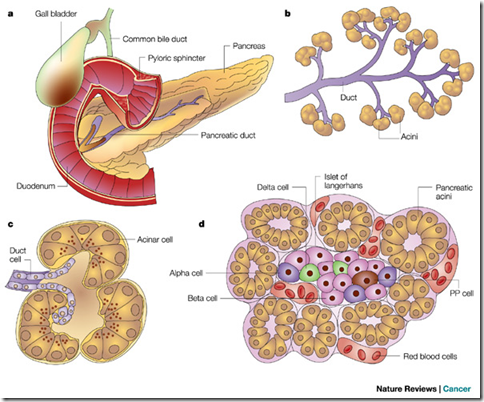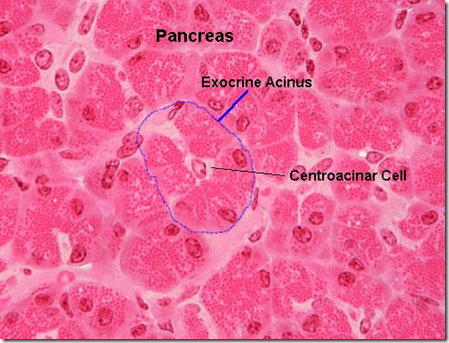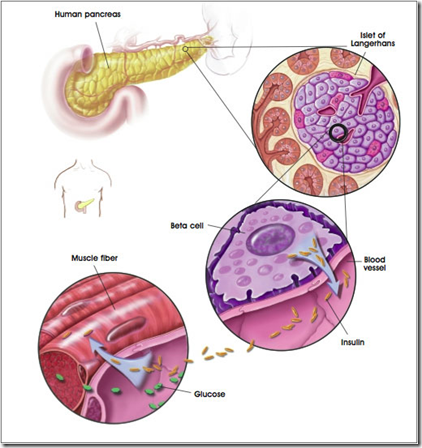The pancrease is a mixed exocrine & endocrine gland.
- lies tranversely in the posterior abdominal wall
- L1-L2 level
- Retroperitoneal (outside peritoneal cavity)
- Divided into
- head
- neck
- body
- tail
Important relations
- Head
- lies in the C-shaped concavity of the duodenum
- IVC & bile duct lie behind the head
- Neck
- portal vein behind the neck
- Body
- aorta, left renal artery and left suprarenal artery are behind the body
- Tail
- left kidney is behind the tail
- related to splenic hilum
Duct system
- Main pancreatic duct
- extends from the tail to the head
- joins the bile duct (green) to form the hepatopancreatic ampulla
- also known as ampulla of vater
- occasionally both ducts open separately
- opens into the descending part of duodenum
- at major duodenal papilla
- Accessory duct when present communicate with the main pancreatic duct
- opens to minor duodenal papilla
Smooth muscle sphincters control the flow of bile & pancreatic fluid into the duodenum
- Pancreatic duct sphincter
- Bile duct sphincter
- Hepatopancreatic sphincter (of Oddi)
Blood supply
Review & confirm again next time.
- From splenic artery
- branch: coeliac artery
- branch: Common hepatic artery
- From gastroduodenal artery
- branch: superior pancreatico-duodenal artery
- From superior mesenteric artery
- branch: inferior pancreatico-duodenal artery
Venous drainage
Veins accompanies the arteries and then drains to
- Splenic artery
- Superior mesenteric vein
Both joins the portal vein and enters the liver.
_____________________________________________________________________
Exocrine pancreas
- arranged as acini
- intercalated ducts penetrate the acini
- around the acini are basement membranes
- Acinar cells have zymogen molecules
- proteases
- lipase
- amylases
Endocrine pancreas
- rounded clusters of cells arranged as islets
- islet of Langerhans
- islets arranged as cords & clumps
- over a million islets
- more abundant in tail region
- In between islets have capillaries
- drain hormones into it
Four types of islet cells
1. A (alpha) – most abundant
- Glucagon: increases bloog glucose by glycogenolysis, lipolysis & gluconeogenesis
2. B (beta)
- Insulin: reduces blood glucose
3. D (delta)
- Somatostatin: inhibits release of other islet cell hormones
4. F
- pancreatic polypeptides: controls gastric secretions








I think the most abundant cell in the islet of langerhans are the Beta cells.
Appreciating the dedication you put into your site and in depth information you present.
It’s great to come across a blog every once in a while that isn’t the same outdated
rehashed information. Excellent read! I’ve saved your site and I’m adding your RSS feeds
to my Google account. Quentin